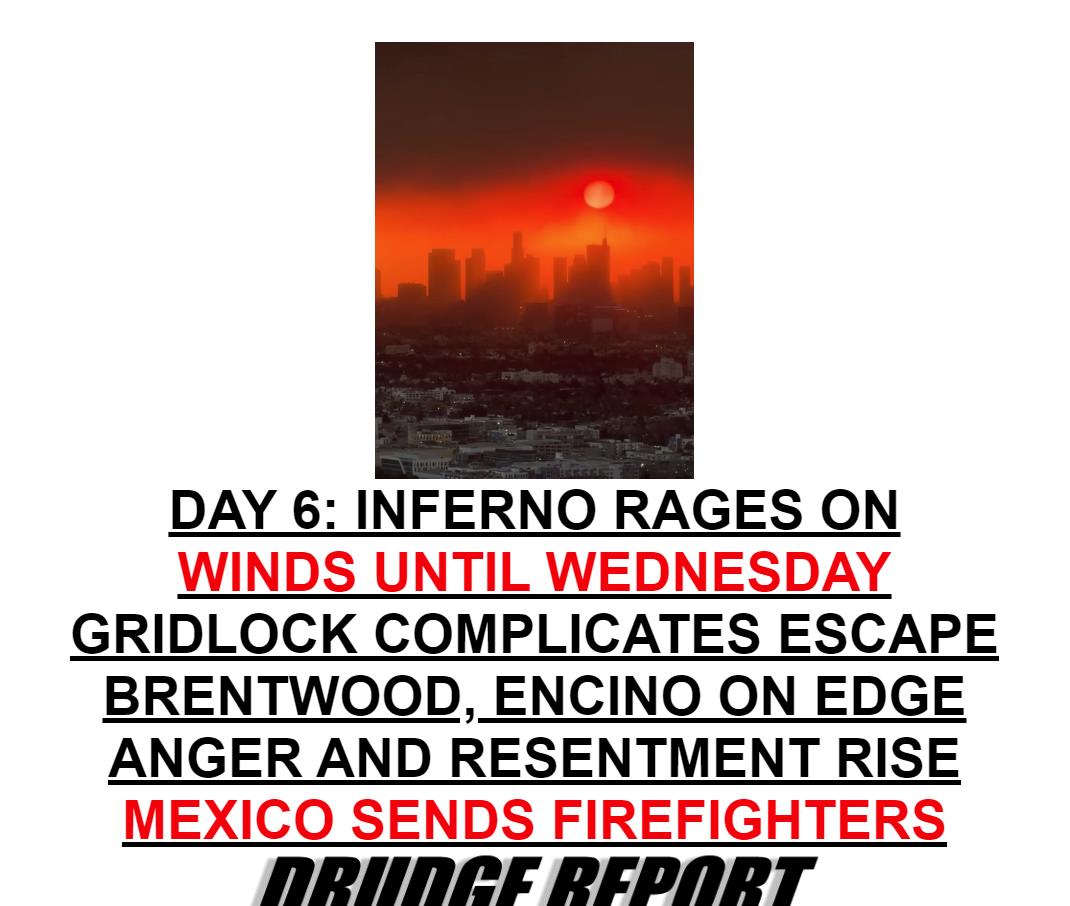
The wildfires ravaging Los Angeles County have not only claimed lives and homes but have also ignited a firestorm of public discontent. With over 12,300 homes destroyed in just five days, the death toll has reached at least 11, and thousands remain displaced. The scale of the disaster is unprecedented, with the fires consuming around 38,000 acres, an area significantly larger than Manhattan.
Kristian Fors of the Independent Institute captures the sentiment on the ground, “When people see that our basic needs are not being met, they’re angry.” This frustration is palpable as the fires, including the Palisades at 11% containment, Eaton at 15%, Kenneth at 80%, and Hurst at 76%, continue to challenge emergency services.
Economic devastation follows in the wake of these fires, with damage estimates soaring past $150 billion, as reported by AccuWeather. This figure represents the highest cost from a wildfire ever recorded in the U.S., dwarfing the previous record set by the 2018 Camp Fire in Paradise, which, adjusted for 2025 dollars, caused $12.5 billion in damage. The current fires are approximately 12 times more costly, signaling a profound economic impact that could last decades, with over 10,000 structures destroyed and an estimated 10+ year rebuilding period.
Insurance companies are facing one of their largest tests, with insured losses potentially topping $20 billion according to J.P. Morgan. Before the fires, State Farm alone dropped 1,600 policies in Pacific Palisades, contributing to a scenario where 69% of homeowners were uninsured against fire. This has forced many to turn to the California FAIR Plan, which has seen an 85% surge in reliance in Pacific Palisades, with losses to this plan now projected to exceed $24 billion.
Governor Gavin Newsom’s political career faces significant backlash, particularly after revelations that he approved over $100 million in cuts to wildfire prevention and resilience programs. These included:
-
A $5 million reduction for CalFire’s fuel reduction teams, impacting vegetation management by the California National Guard.
-
$28 million less for state conservancies focused on expanding wildfire resilience.
-
A $12 million cut to a home hardening project aimed at protecting properties from wildfires.
-
An $8 million decrease in monitoring and research, crucial for CalFire and state universities.
-
$4 million cut from the forest legacy program, which promotes good land management practices.
-
$3 million less for an inter-agency forest data hub.
With California’s high tax rates, residents are questioning the allocation of these funds, especially in light of such a catastrophic event. This disaster comes on the heels of 2023, where the U.S. experienced 28 climate disasters costing over $93 billion, underscoring an alarming trend in climate change impacts.
This wildfire season might also lead to a shift in political sentiment in California, traditionally a blue state, with some predicting a potential vote swing due to the perceived mismanagement and Newsom’s previous political ambitions now appearing compromised.
Moreover, the fires are not just a local issue but have broader implications. The Los Angeles fires are burning through some of the most expensive real estate in the country, with homes in affected areas like Pacific Palisades averaging over $3 million, further inflating the economic impact.
As containment efforts continue, the community’s resilience is tested, and the call for accountability resonates louder than ever.
Sources:
https://www.foxnews.com/politics/gov-newsom-cut-fire-budget-100m-months-lethal-california-fires
https://x.com/KobeissiLetter/status/1878223623195959344
https://californiagazette.com/california-high-income-tax-burden-impact/
https://www.politico.com/news/magazine/2025/01/11/altadena-california-fires-climate-change-00197658
481 views